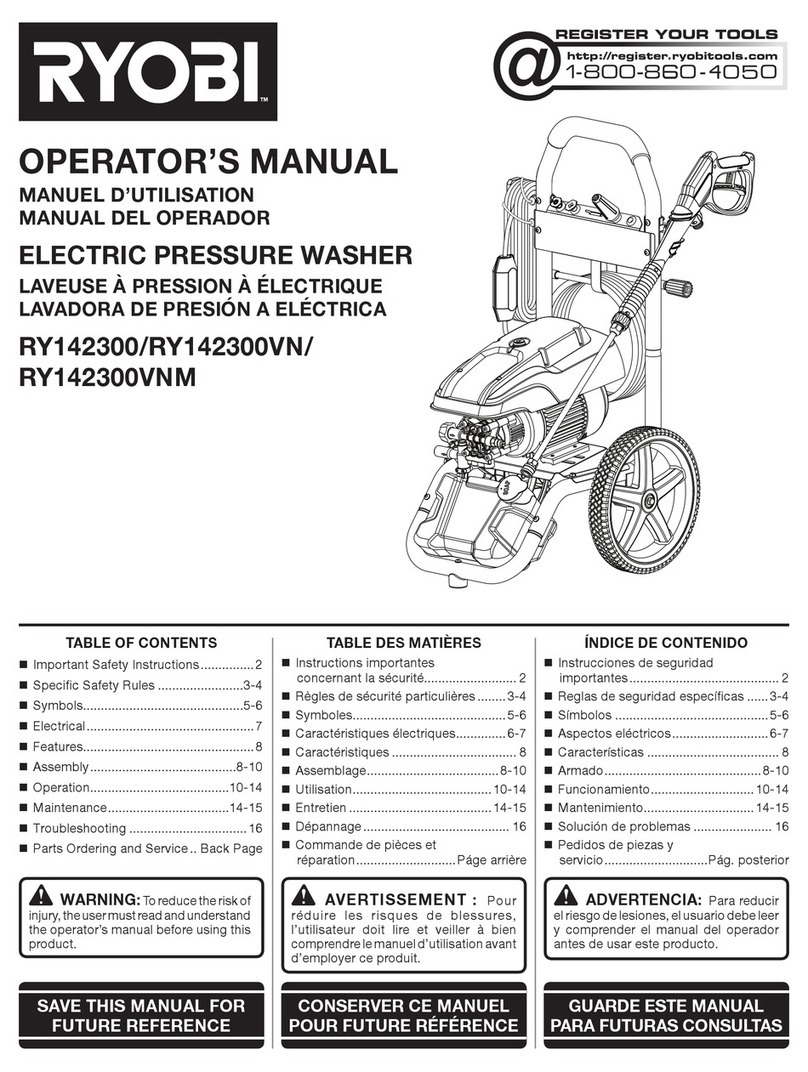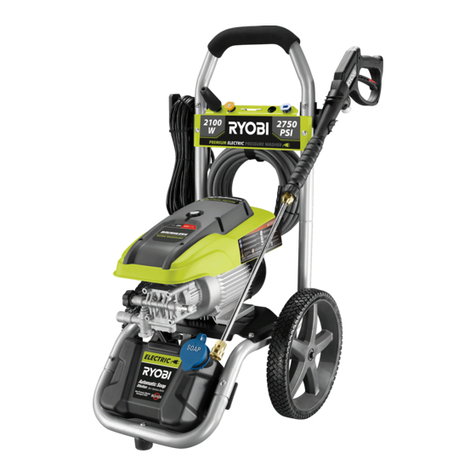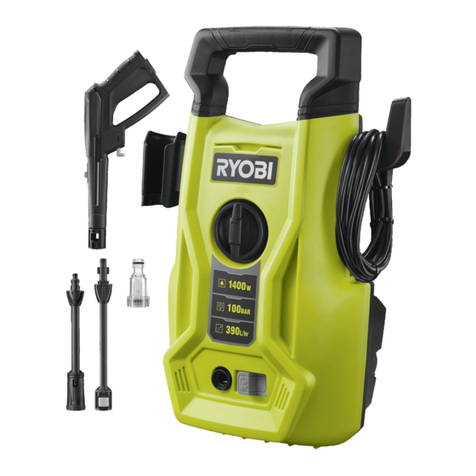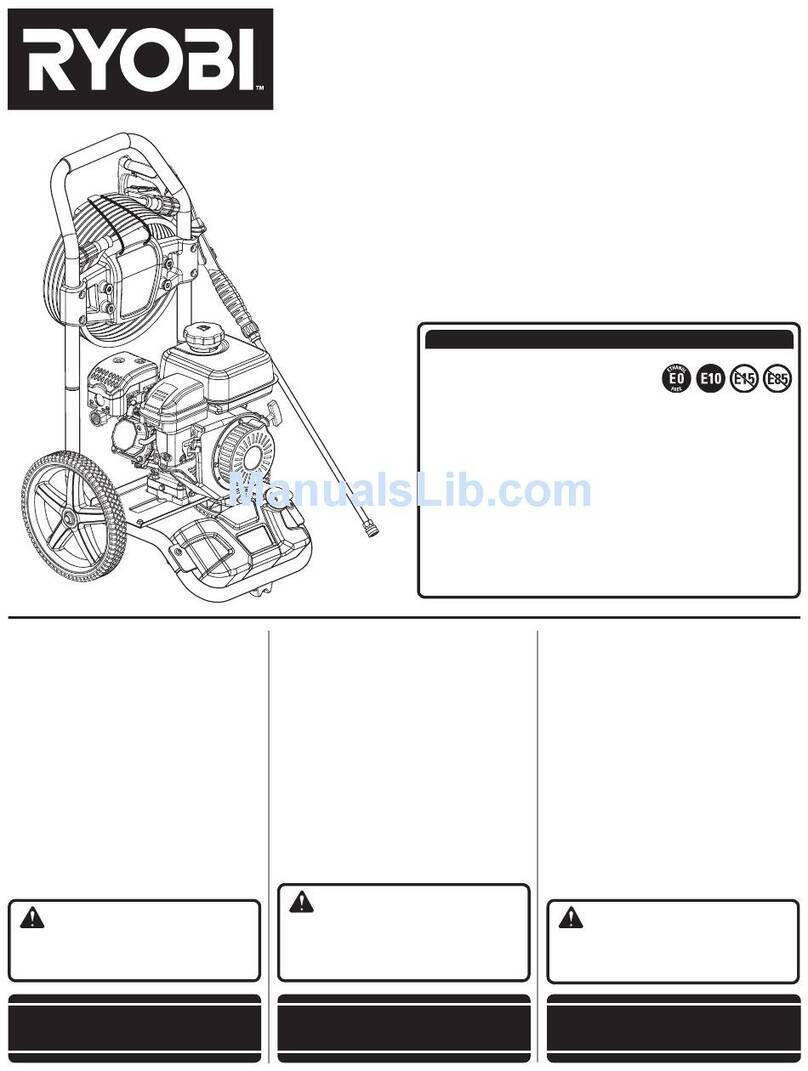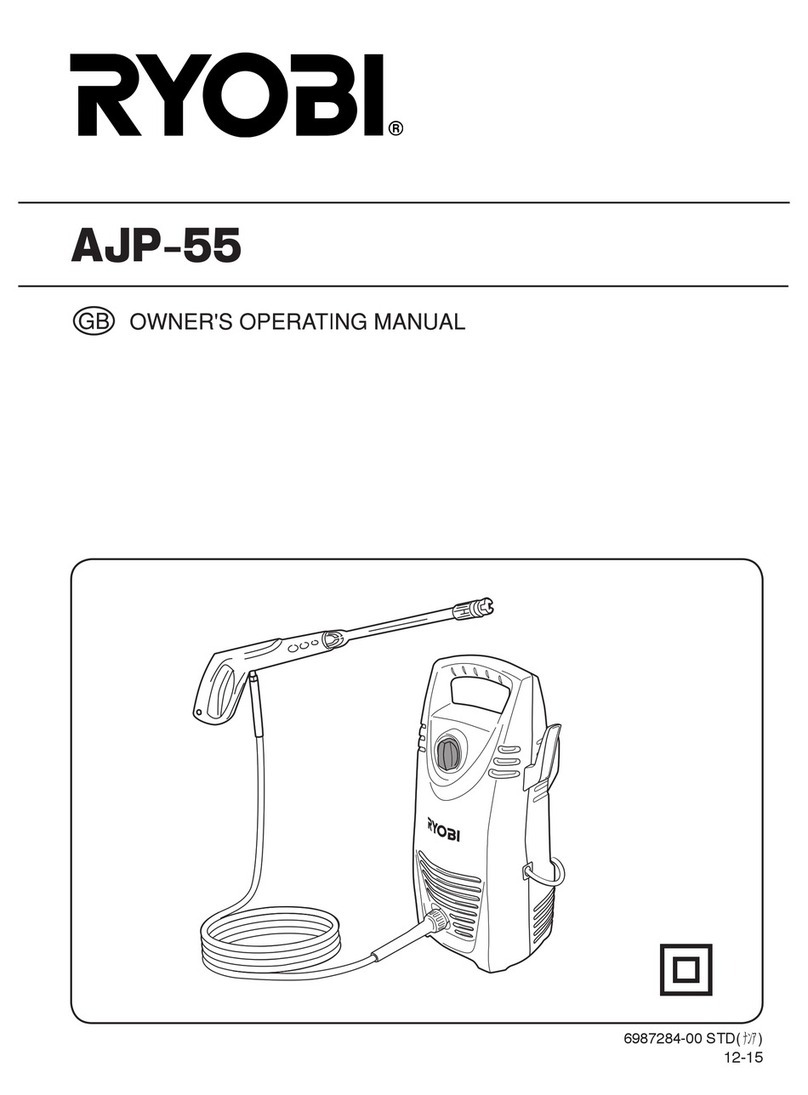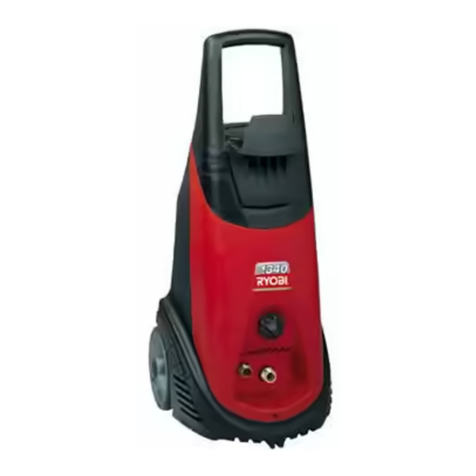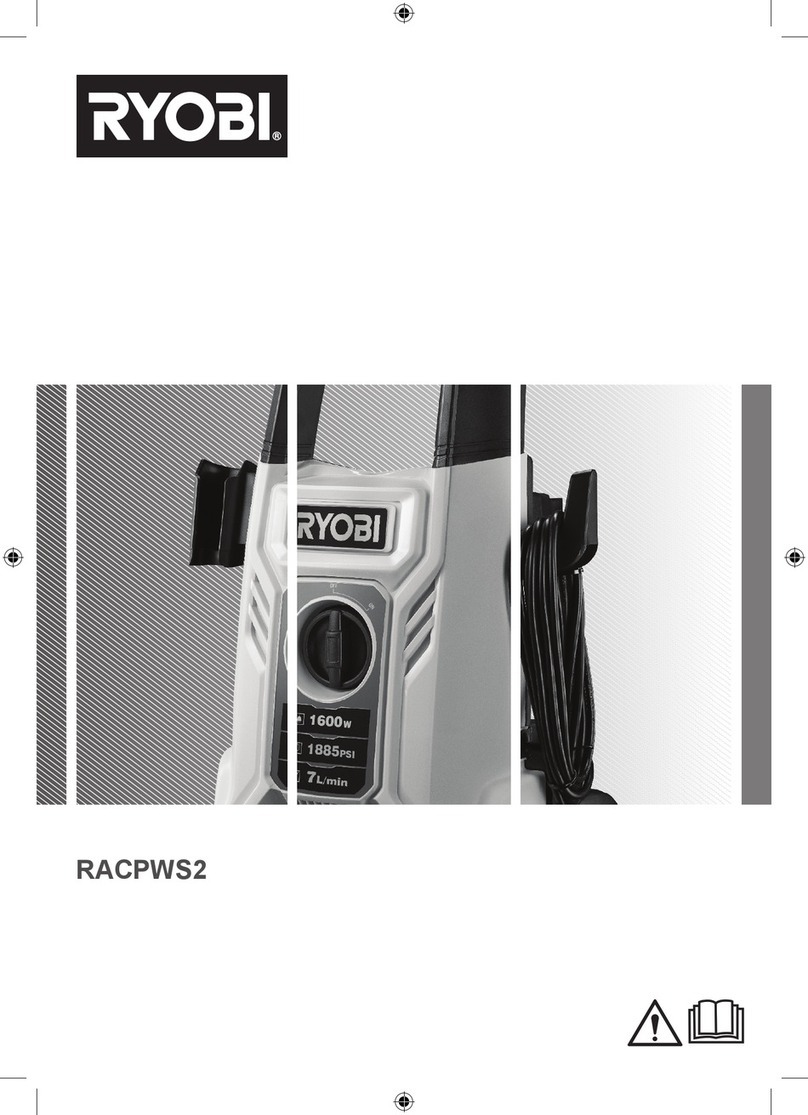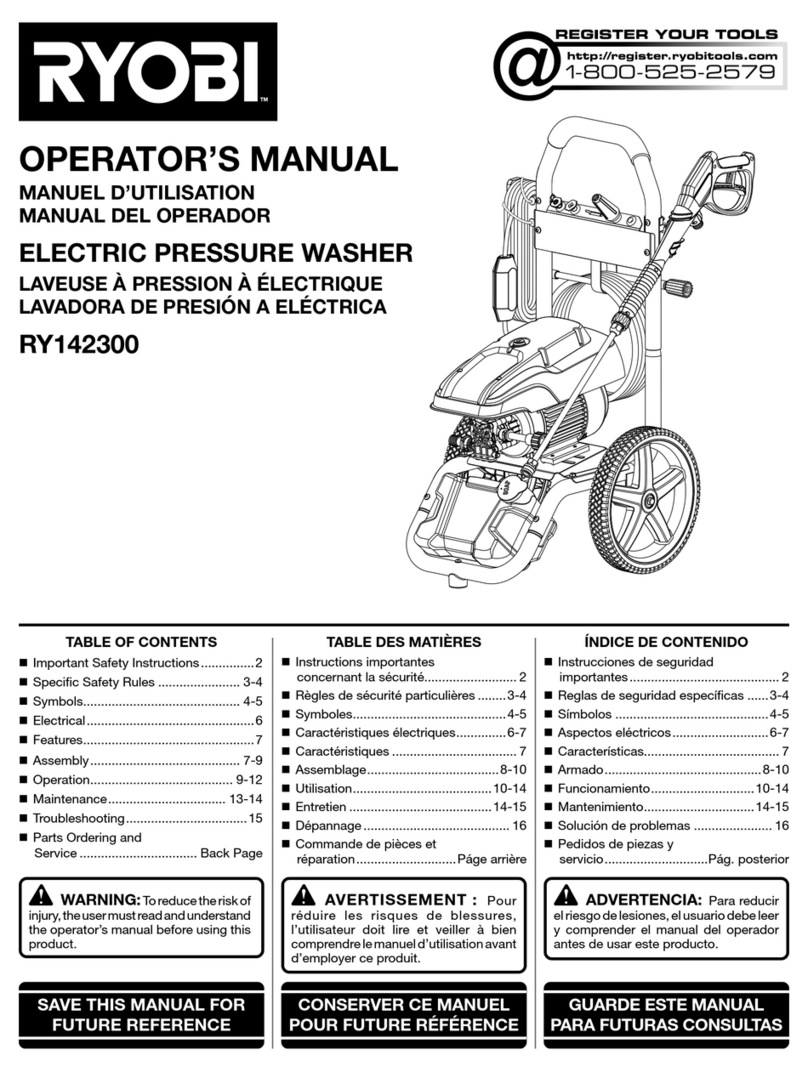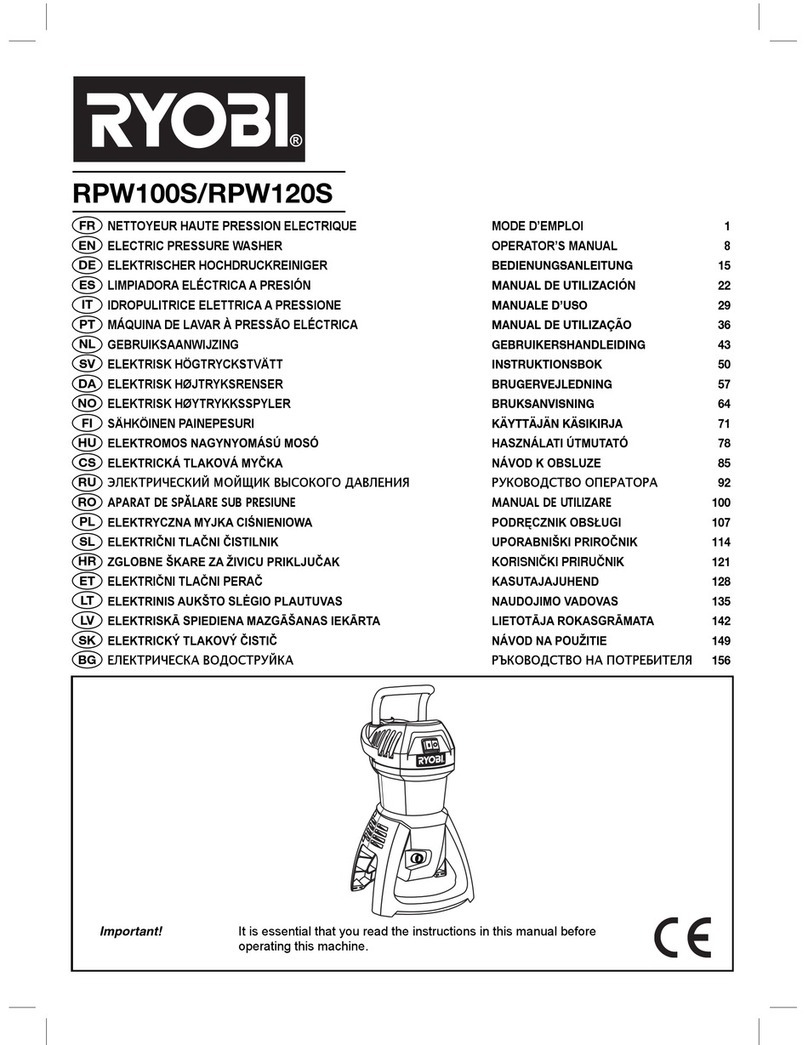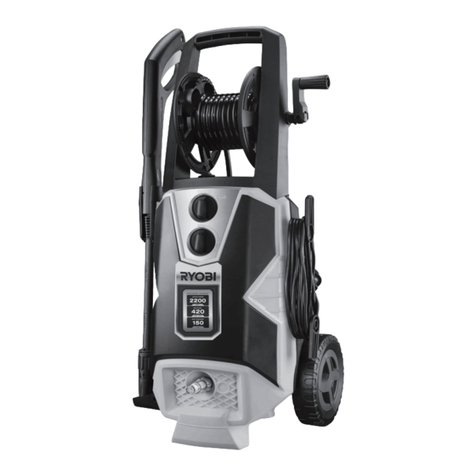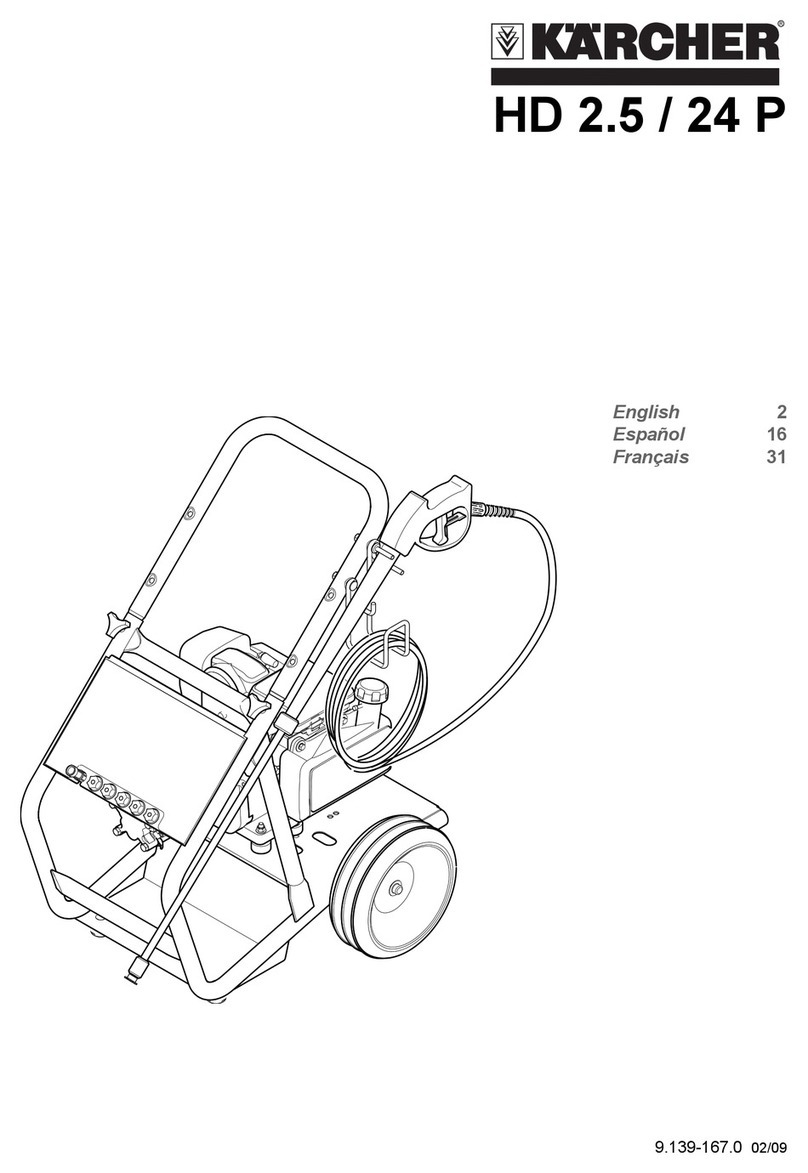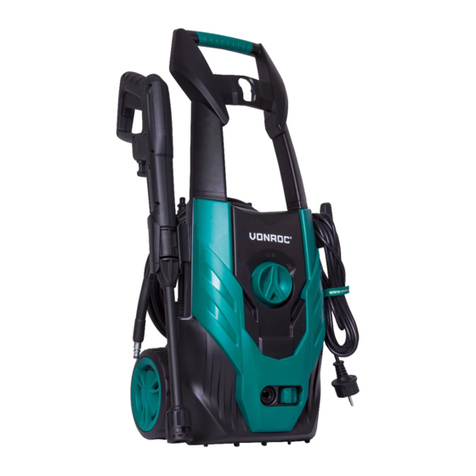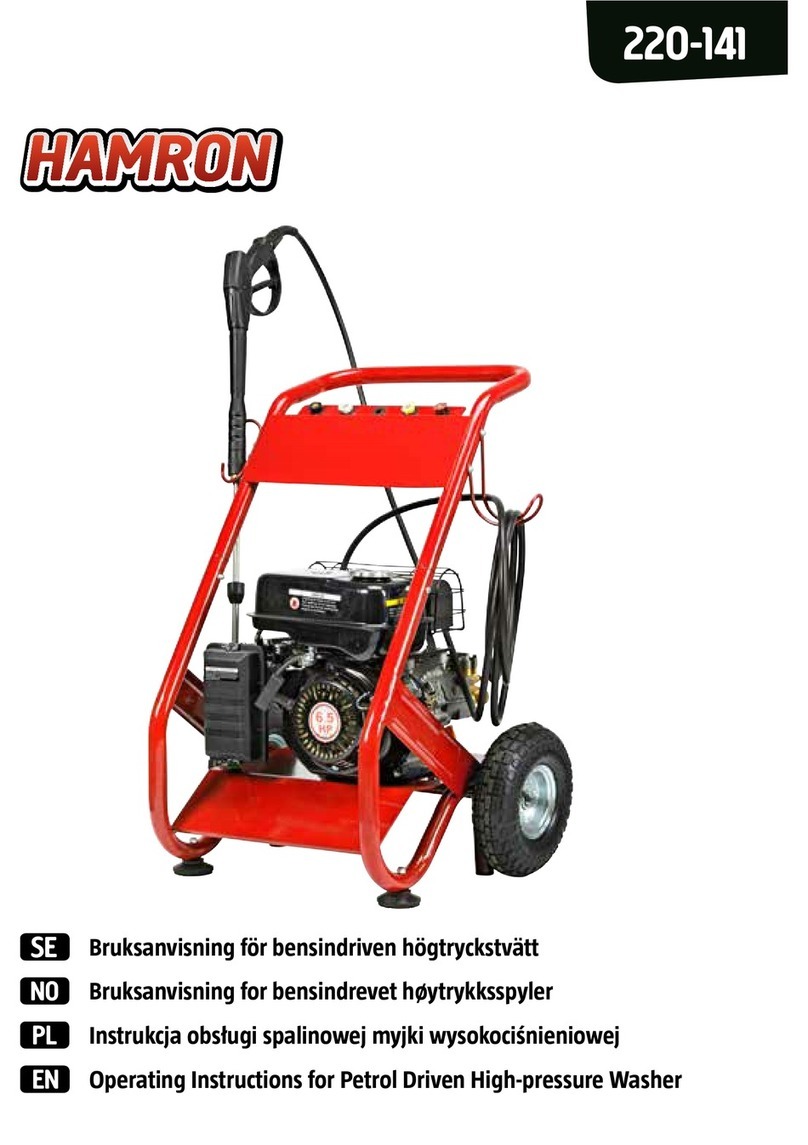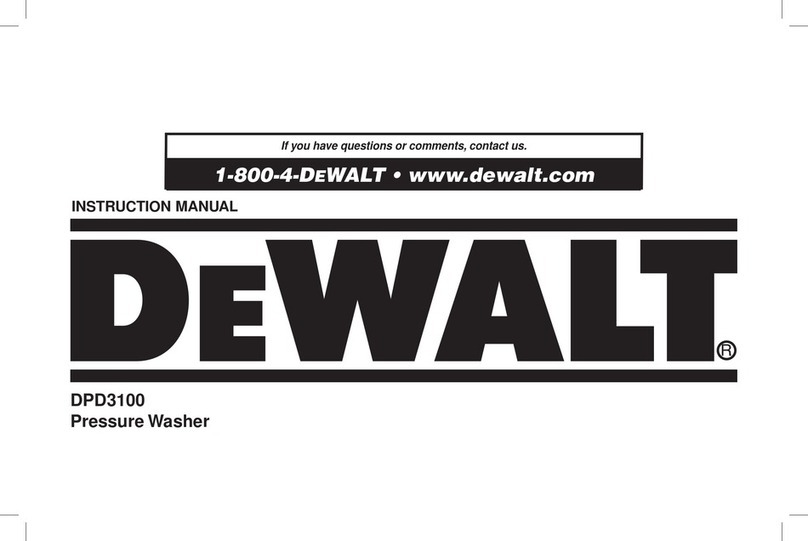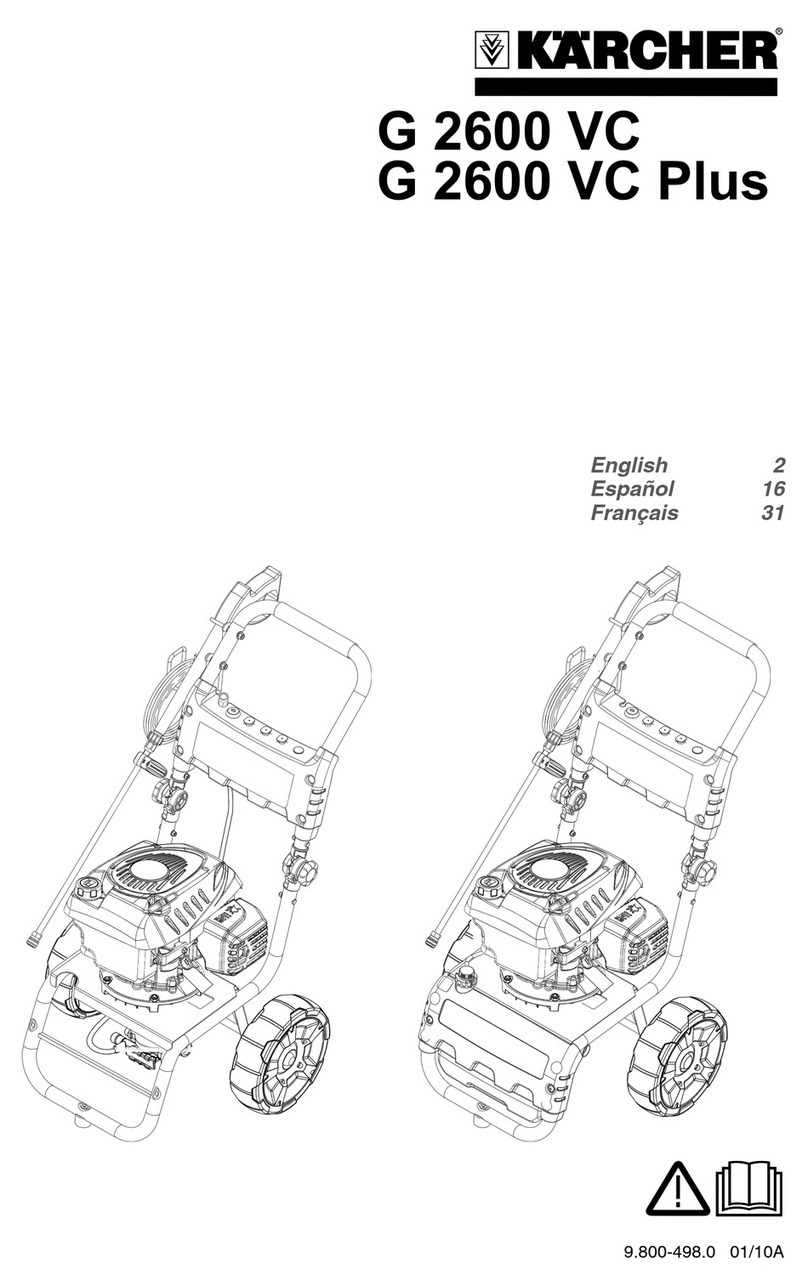1
English (Original Instructions)
INTENDED USE
nThe cleaner is intended only for the cleaning of
vehicles, boats, buildings, etc, by the removal
of stubborn dirt using clean water and chemical
detergents.
nFor domestic use only, not for professional use, and
only for operation at temperatures above 0°C .
IMPORTANT SAFETY INSTRUCTION
WARNING:
Read and understand all instructions. Failure
to follow all instructions listed below may result
in electric shock, fire and/or carbon monoxide
poisoning which will cause death or serious
personal injury.
READ ALL INSTRUCTIONS BEFORE USING THIS
PRODUCT
n KNOW YOUR TOOL. Read the operator's manual
carefully. Learn the machine's applications and
limitations as well as the specific potential hazards
related to this tool.
n KEEP GUARDS IN PLACE and in working order.
Never operate the tool with any guard or cover
removed. Make sure all guards are operating
properly before each use.
n REMOVE ADJUSTING KEYS AND WRENCHES.
Form habit of checking to see that keys and
adjusting wrenches are removed from tool before
turning it on.
n TO REDUCE THE RISK OF INJURY, keep children
and visitors away. All visitors should wear safety
glasses and be kept a safe distance from work area.
n Keep the area of operation clear of all persons,
particularly small children, and pets.
nDo not operate the engine in a confined space
where dangerous carbon monoxide fumes can
collect. Carbon monoxide is a colourless, odorless
and an extremely dangerous gas and can cause
unconsciousness or death.
nUSE RIGHT TOOL. Don't force tool or attachment
to do a job it was not designed for. Don't use it for a
purpose not intended.
n DRESS PROPERLY. Do not wear loose clothing,
gloves, neckties, or jewelry. They can get caught
and draw you into moving parts. Rubber gloves and
nonskid footwear are recommended when working
outdoors. Also wear protective hair covering to
contain long hair.
n Do not operate the equipment while barefoot or
when wearing sandals or similar lightweight
footwear. Wear protective footwear that will protect
your feet and improve your footing on slippery
surfaces.
nExercise caution to avoid slipping or falling.
n ALWAYS WEAR SAFETY GLASSES WITH SIDE
SHIELDS. Everyday eyeglasses have only impact-
resistant lenses; they are not safety glasses.
n DON'T OVERREACH OR STAND ON UNSTABLE
SUPPORT. Keep proper footing and balance at all
times.
n USE ONLY RECOMMENDED ACCESSORIES.
The use of improper accessories may cause risk
of injury.
n NEVER STAND ON TOOL. Serious injury could
occur if the tool is tipped.
n CHECK DAMAGED PARTS. Before further use
of the tool, a guard or other part that is damaged
should be carefully checked to determine that it will
operate properly and perform its intended function.
Check for alignment of moving parts, binding of
moving parts, breakage of parts, mounting and
any other conditions that may affect its operation.
A guard or other part that is damaged must be
properly repaired or replaced by an authorized
service center to avoid risk of personal injury.
n NEVER LEAVE TOOL RUNNING UNATTENDED.
TURN POWER OFF. Don't leave tool until it comes
to a complete stop.
nKeep the engine away from grass, leaves, or
grease to reduce the chance of a fire hazard.
n KEEP THE EXHAUST PIPE FREE OF FOREIGN
OBJECTS.
nFollow manufacturer’s recommendations for
safe loading, unloading, transport, and storage
of machine.
n BE THOROUGHLY FAMILIAR WITH CONTROLS.
Know how to stop the product and bleed pressure
quickly.
n Keep TOOL dry, clean, and free from oil and
grease. Always use a clean cloth when cleaning.
Never use brake fluids, petrol, petroleum-based
products, or any solvents to clean tool.
n STAY ALERT AND EXERCISE CONTROL. Watch
what you are doing and use common sense. Do not
operate tool when you are tired. Do not rush.
n DO NOT operate the product while under the
influence of drugs, alcohol, or any medication.
nCheck the work area before each use. Remove all
objects such as rocks, broken glass, nails, wire, or
string which can be thrown or become entangled in
the machine.
nDO NOT USE TOOL IF SWITCH DOES NOT
TURN IT ON AND OFF. Have defective switches
replaced by an authorized service center.
n Before cleaning, repairing, or inspecting, shut off
the engine and make certain all moving parts have
stopped. Disconnect the spark plug wire, and keep
the wire away from the plug to prevent accidental
starting.
nAVOID DANGEROUS ENVIRONMENT. Don’t use
in damp or wet locations or expose to rain. Keep
work area well lit.
n NEVER USE IN AN EXPLOSIVE ATMOSPHERE.
Normal sparking of the motor could ignite fumes.
n Do not operate while smoking or near an open
flame.
nDO NOT OPERATE AROUND dry brush, twigs,
cloth rags, or other flammable materials.
WARNING:
RISK OF INJECTION OR INJURY – Do not direct
discharge stream at persons.
nOperation of this equipment may create sparks
that can start fires around dry vegetation. A spark
arrestor may be required. The operator should

